Susan Davidson
Solon: Communication-efficient Byzantine-resilient Distributed Training via Redundant Gradients
Oct 09, 2021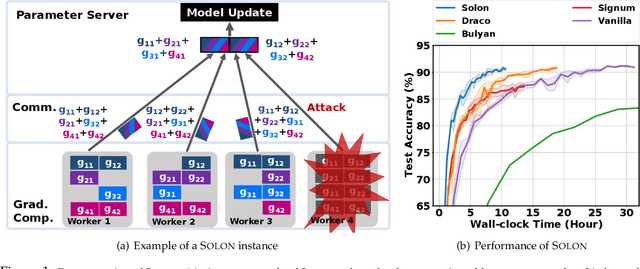
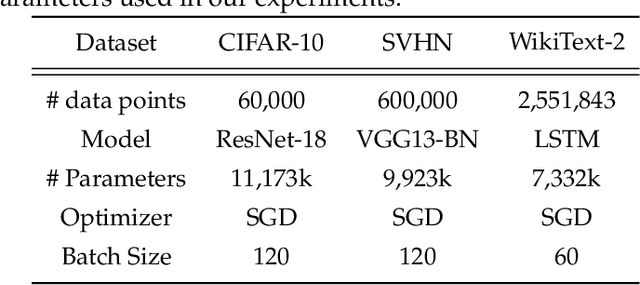
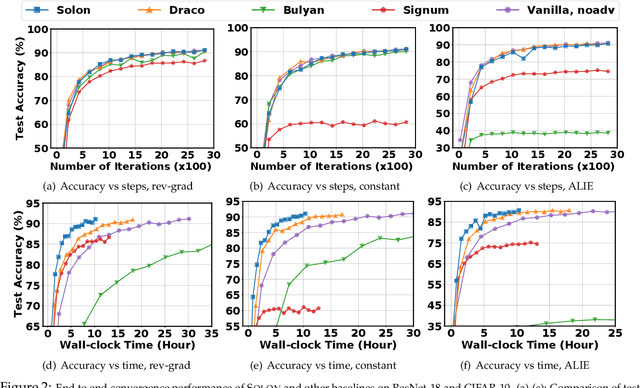
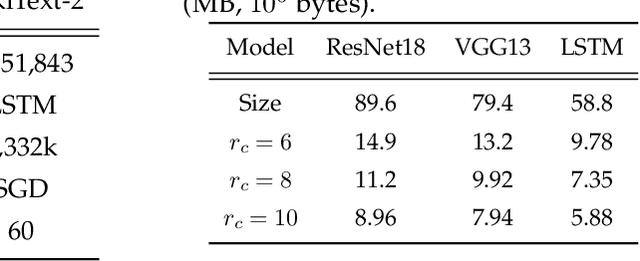
Abstract:There has been a growing need to provide Byzantine-resilience in distributed model training. Existing robust distributed learning algorithms focus on developing sophisticated robust aggregators at the parameter servers, but pay less attention to balancing the communication cost and robustness. In this paper, we propose Solon, an algorithmic framework that exploits gradient redundancy to provide communication efficiency and Byzantine robustness simultaneously. Our theoretical analysis shows a fundamental trade-off among computational load, communication cost, and Byzantine robustness. We also develop a concrete algorithm to achieve the optimal trade-off, borrowing ideas from coding theory and sparse recovery. Empirical experiments on various datasets demonstrate that Solon provides significant speedups over existing methods to achieve the same accuracy, over 10 times faster than Bulyan and 80% faster than Draco. We also show that carefully designed Byzantine attacks break Signum and Bulyan, but do not affect the successful convergence of Solon.
Dynamic Gaussian Mixture based Deep Generative Model For Robust Forecasting on Sparse Multivariate Time Series
Mar 03, 2021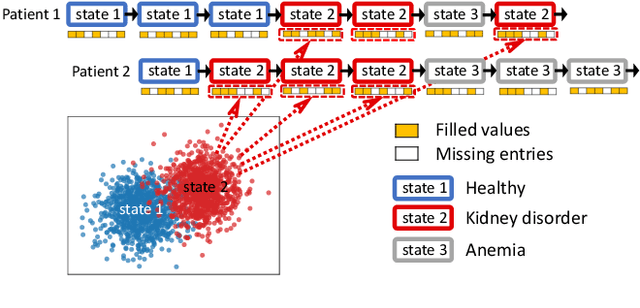


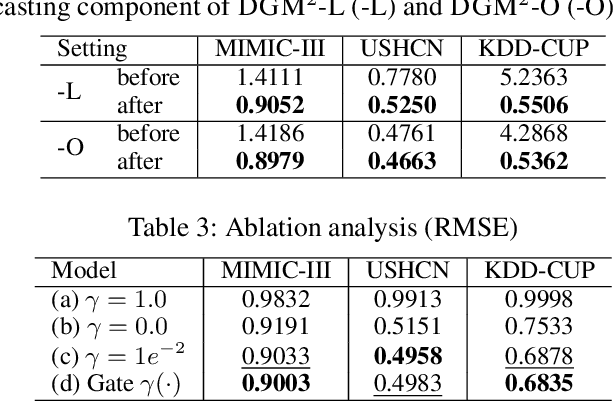
Abstract:Forecasting on sparse multivariate time series (MTS) aims to model the predictors of future values of time series given their incomplete past, which is important for many emerging applications. However, most existing methods process MTS's individually, and do not leverage the dynamic distributions underlying the MTS's, leading to sub-optimal results when the sparsity is high. To address this challenge, we propose a novel generative model, which tracks the transition of latent clusters, instead of isolated feature representations, to achieve robust modeling. It is characterized by a newly designed dynamic Gaussian mixture distribution, which captures the dynamics of clustering structures, and is used for emitting timeseries. The generative model is parameterized by neural networks. A structured inference network is also designed for enabling inductive analysis. A gating mechanism is further introduced to dynamically tune the Gaussian mixture distributions. Extensive experimental results on a variety of real-life datasets demonstrate the effectiveness of our method.
 Add to Chrome
Add to Chrome Add to Firefox
Add to Firefox Add to Edge
Add to Edge